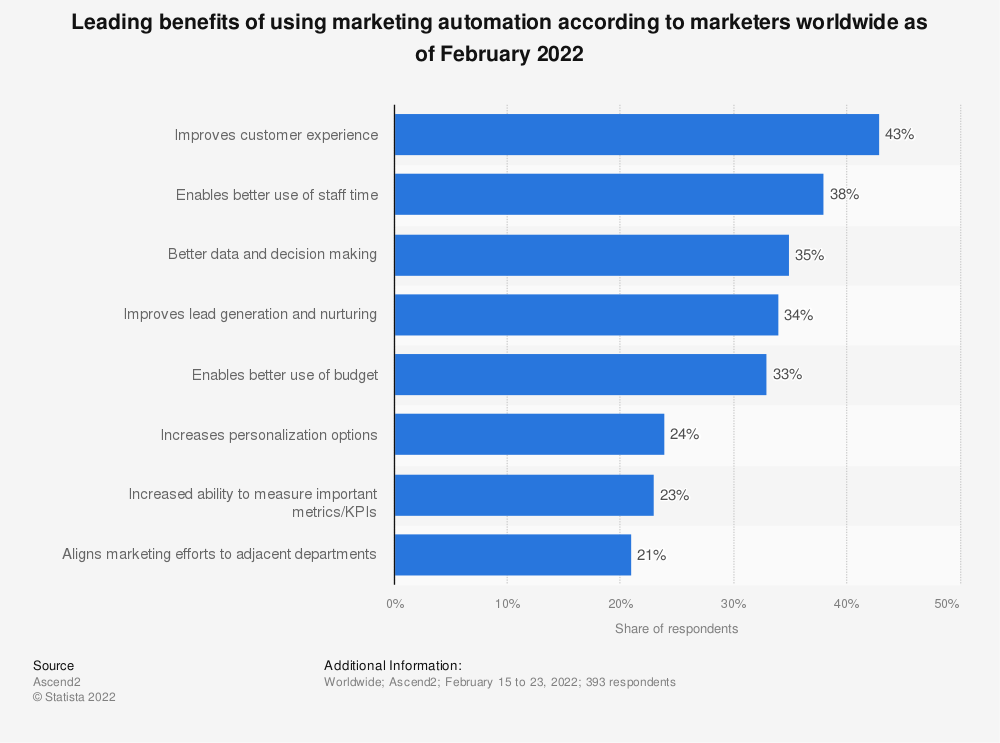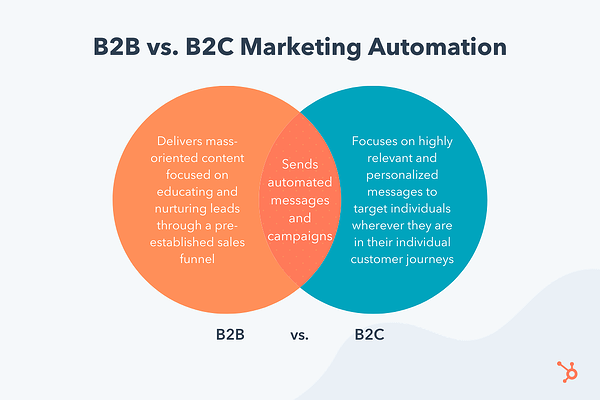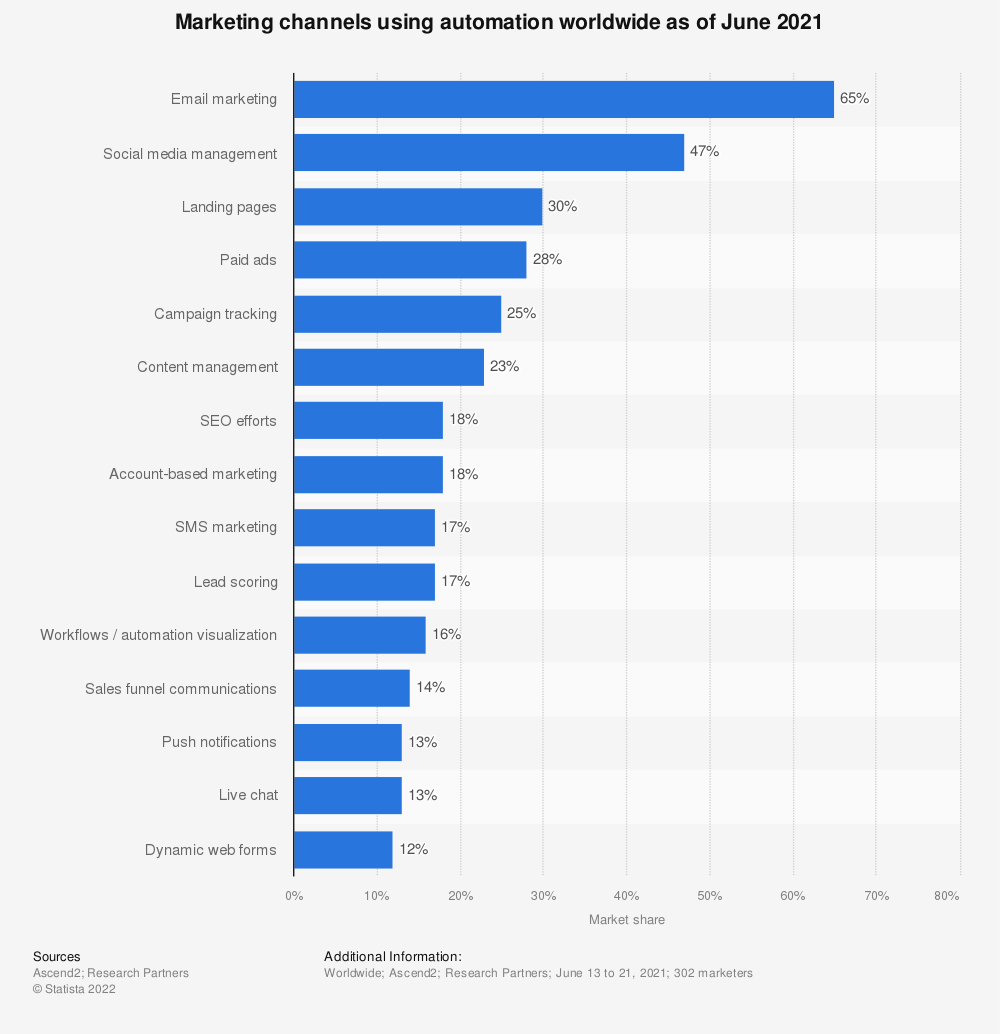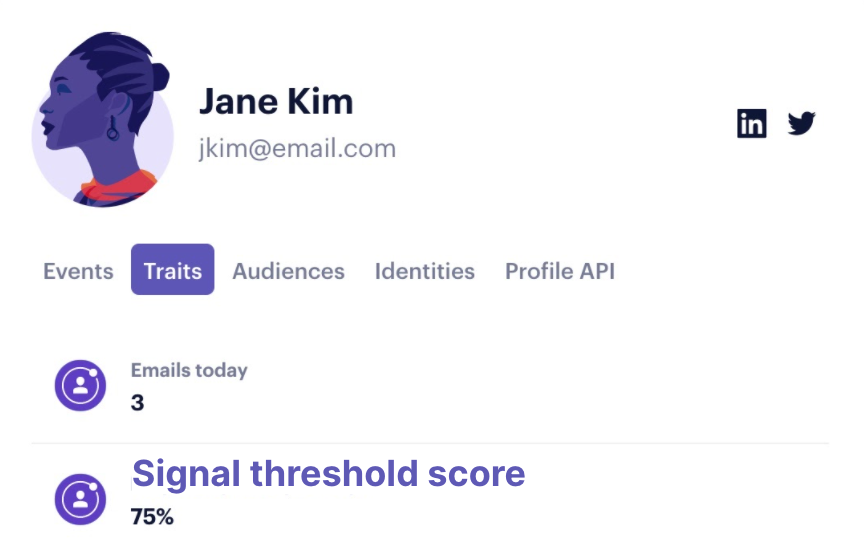How to Harness Automation for B2C Marketing
We walk through some different ways to automate your B2C marketing campaigns and boost ROI.
We walk through some different ways to automate your B2C marketing campaigns and boost ROI.
B2C marketing automation happens when businesses use software to automatically execute tasks to promote and sell their products to consumers. Companies can leverage such apps and systems to increase efficiency, revenue, and ROI.
Marketing automation improves the customer experience by allowing you to deliver personalized omnichannel campaigns at scale – a near-impossible feat to pull off manually. Another advantage is that teams no longer have to do routine tasks, having more time for higher-value work like strategy and ideation.

What is the difference between B2C and B2B marketing automation?
The most significant difference between B2C and B2B marketing is the sales cycle length. Consumers make purchasing decisions in days, hours, or minutes. Businesses take weeks at best, often months, and sometimes years.
This duration difference occurs because B2C marketing usually involves just one person making a purchase decision: the individual consumer. B2B marketing requires you to convince many decision-makers and stakeholders.

Source
For this reason, B2C marketing automation is speedier. It focuses on convincing someone to make or reconsider a decision in the moment (e.g. providing a personalized upsell offer during checkout).
B2B marketing automation focuses on educating leads about an offer over a long period, gradually convincing them – and all the other essential stakeholders – about the value of a product. Such lead nurturing can happen through e-books, webinars, and personal sales calls that are delivered and scheduled automatically based on where a prospect is in the sales funnel.
Check out What is Marketing Automation? for a more detailed definition of marketing automation.
B2C marketing automation tools typically focus on one or a few channels, like email, social media, or live chat. Some help with specific activities, like customer segmentation or omnichannel marketing. We'll explain these categories below, along with three notable tools for each group.

Email marketing is one of the most popular channels to automate. Automated emails allow marketers to send customers the right message at the exact right time.
Email marketing automation is commonly used for customer onboarding, cross- and/or upselling promotions, re-engagement campaigns for shopping cart abandoners, or asking for feedback after a customer support interaction.
Twilio SendGrid provides reliable and affordable email marketing at scale.
Drip delivers email marketing with features tailored to eCommerce businesses.
Userlist is an email marketing platform focused on SaaS companies.
Tools for automated social media management help schedule social posts in advance, perform social listening for brand mentions, and automatically create up-to-date reports on your content's performance.
Buffer lets you schedule posts and engage with customers on popular social media channels.
Hootsuite allows you to schedule and plan content on social media while also providing analytics and listening features.
Sendible focuses on agencies that manage social media channels with and for clients.
Adding a chat function to your product or website lets prospects and customers instantly get an answer from a bot or team member. This responsiveness increases the chances that they will make a purchase or continue their journey instead of heading off to a competitor.
Twilio Chat makes it easy to build a customized chat function for your website or product.
Zendesk's customer service platform includes a chat functionality that you can add to your app or site.
GoSquared is an affordable alternative to more expensive chat solutions.
A segmentation tool organizes your customers into groups based on demographics, shared behaviors, or other traits. You can then use these segments to trigger personalized campaigns, in-app messaging, and other marketing activities.
Twilio Engage lets you create audiences within your customer data based on behaviors, actions, and other data points.
Kissmetrics is an alternative to Google Analytics for SaaS and eCommerce companies with advanced segmentation capabilities.
UserGuiding helps you create a custom and effective onboarding experience for your customers and includes a powerful segmentation feature.
Omnichannel marketing tools let you orchestrate your marketing activities across many channels and sources. Some of these tools, like Zapier, simply let you connect different applications so data can flow between them. Others, like Twilio Segment, allow you to synchronize all your data and build personas and campaigns from that information.
Twilio Segment's Journeys feature lets you design campaigns across all your channels.
Zapier helps you to sync data between more than 5,000 apps and services.
Iterable is a cross-channel marketing platform for large brands that can deliver email, mobile, and other messages.
Run through these five steps to automate and optimize your B2C marketing campaigns.
B2C marketing automation requires up-to-date data since your software executes tasks based on the information it receives about your customers. You need a single source of truth of customer data. Otherwise, confusing and unwanted actions might trigger based on incorrect or outdated information.

Say you have two separate locations for storing marketing and sales data that only synchronize with each other every 24 hours. In that case, you might send someone a recommendation – based on your siloed marketing data – for a product they've already purchased.
You can avoid such scenarios with a customer data platform (CDP) like Twilio Segment. Our platform collects and distributes data to and from hundreds of sources and destinations in real-time. It neatly syncs all that information into individual customer profiles that are always up to date.
With a CDP like Twilio Segment, you can assign people to audiences that correspond with their position in the customer journey based on actions they have taken – or have yet to take.
Say someone has returned to a product page on your website twice within 24 hours but hasn't purchased yet. You could define that as a signal that they're deciding whether to buy from you or a competitor.
Using that information, you can automatically assign them to a "Decision" audience and send a special offer for that product by email to win them over.
Check out our Guide to Customer Journey Mapping for a step-by-step walkthrough of how to design and map out your customer journey.
An omnichannel experience allows customers to switch seamlessly between channels and devices to interact with your business. They might, for example, add items to their shopping cart on your website while on a laptop at home, then check out and complete their purchase on mobile as they walk out the door.
Underpinning your entire operation with a CDP like Segment is essential for delivering such experiences. You'll need to know that person X on mobile and person Y on a desktop is one individual. Segment can do this because it synthesizes data from hundreds of sources in real-time.
You can use this centralized customer data in Segment's Journeys feature to design your omnichannel campaign, indicating what should happen at each journey stage and on which channel based on someone's behavior.
When a new customer has just purchased a product from you or started using your service, you want to ensure they experience its value immediately. Doing so increases the chance they will keep using your offering long-term or come back for repeat purchases.
Drip emails are the most common and effective way to welcome new customers and familiarize them with your offering. In the most basic approach, you send out a series of emails or other messages on a time-based schedule. For example, a welcome email right after purchase, then an email the next day explaining your product's most important feature, another two days later with customer reviews, and so on.
You can also offer live chat on your website or within your product with a tool like Twilio Chat. Customers can contact you easily and instantly when they get stuck or have questions.
Check out Power intelligent live chat with Twilio Segment and Twilio for more details on setting up intelligent live chat for your customers.
You can use behavioral data to send push notifications, in-app messages, and emails that match customers' unique needs in the later stages of their journey.
For example, someone has purchased a subscription to your app but only uses two of your product's three paid features. In that case, you can send them more information and use cases about the third feature. You could even trigger an in-app notification to schedule a call with your customer success team to walk through that functionality.
Check out our Automated Marketing Funnel Guide and Marketing Automation Processes articles for more details on implementing marketing automation.
Connect with a Segment expert who can share more about what Segment can do for you.
We'll get back to you shortly. For now, you can create your workspace by clicking below.
Marketing automation helps companies deliver personalized omnichannel campaigns at scale. Teams also can offload repetitive tasks and focus on more high-level strategy and ideation.
Automated email campaigns like onboarding sequences or shopping cart abandonment follow-ups are some of the most common B2C marketing strategies. Others include the automation of social media publishing, customer service chatbots, and personalized landing pages.
Twilio Segment helps businesses collect and synchronize customer data from across all their channels into one place. They can then use Twilio Engage to create audiences, orchestrate campaigns, and send data to hundreds of third-party destinations to deliver omnichannel customer experiences.